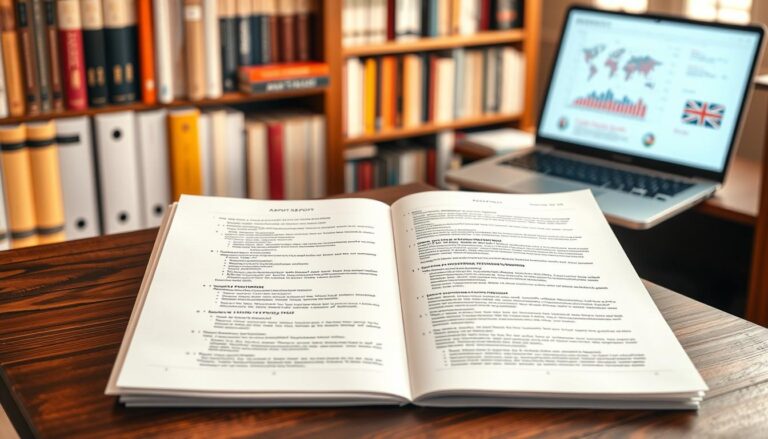Learning how to take notes effectively is one of the most valuable skills you can develop as a university student. Good note-taking doesn’t just help you record information—it enhances your understanding, improves retention, and makes exam preparation significantly easier. Whether you’re sitting in a fast-paced lecture or studying complex textbooks, the right note-taking approach can transform your academic experience.
In this comprehensive guide, we’ll explore proven note-taking methods, practical techniques, and strategies that can help you capture and retain information more effectively. Let’s dive into the art and science of taking notes that actually work.
Understanding the Purpose of How to Take Notes
Before diving into specific methods, it’s important to understand what notes are actually for. Many students mistakenly believe that notes serve only as a record of information. However, effective notes serve two critical functions:
Recording Information
Notes create a reliable record of key concepts, facts, and ideas that you can reference later. This is especially important for complex subjects where details matter.
Processing Information
The act of taking notes helps you engage with the material actively. When you decide what to write down and how to organize it, you’re already beginning to understand and remember the content.
Research shows that students who take effective notes score significantly higher on tests than those who don’t. This is because note-taking isn’t just about writing things down—it’s about engaging your brain in active learning.
Ready to transform your study habits?
Download our free note-taking templates to get started with organized, effective notes today.
The Cornell Method: A Structured Approach to How to Take Notes
Developed by Walter Pauk at Cornell University, this method creates a systematic format for condensing and organizing notes without laborious recopying. It’s particularly effective for lecture-based courses.

How to Use the Cornell Method:
Advantages
- Organized system for recording and reviewing
- Encourages active engagement with material
- Creates built-in study guides
- Reduces review time before exams
Challenges
- Requires preparation before class
- Takes practice to master
- May be difficult for very fast-paced lectures
The Cornell method is particularly effective for subjects that require connecting concepts and building understanding over time. Cornell University’s Learning Strategies Center offers comprehensive resources on mastering this technique.
The Outline Method: Structured Organization for Clear Notes
The outline method uses a hierarchical structure to organize information by importance. This method works exceptionally well for subjects with clear main topics and subtopics.
How to Use the Outline Method:

Pro Tip for Visual Learners
Use different colors for different levels in your outline. For example, use blue for main topics, green for subtopics, and black for details. This creates visual cues that help you navigate your notes quickly.
The outline method helps you see the relationships between ideas at a glance, making it ideal for subjects like history, literature, or business where hierarchical relationships matter.
Looking to improve your overall study approach? Check out our guide on effective study techniques that complement good note-taking.
The Mapping Method: Visual Approach to How to Take Notes
For visual learners, the mapping method transforms notes into a graphic representation that shows relationships between facts and concepts. This method is particularly useful for subjects with interconnected ideas.
How to Use the Mapping Method:

Mind mapping is particularly effective for brainstorming sessions, planning essays, or understanding complex systems where multiple elements interact.
Enhance your visual note-taking skills
Try our interactive mind mapping templates designed specifically for university students.
The Charting Method: Organized Comparison Notes
The charting method is ideal when you need to compare multiple topics across the same set of categories. This approach works exceptionally well for courses with lots of factual information that fits into clear categories.
How to Use the Charting Method:

| Note-Taking Method | Best For | Structure | Time Investment | Review Efficiency |
| Cornell | Lectures, textbooks | 3-part page division | Medium | High |
| Outline | Structured content | Hierarchical | Low | Medium |
| Mapping | Visual learners | Radial/branching | Medium | Medium |
| Charting | Comparative topics | Table/grid | High (preparation) | Very High |
The charting method is particularly useful for subjects like biology (comparing organisms), history (comparing time periods), or literature (comparing characters or works).
For more strategies on organizing your study materials, check out our article on organizing study materials for maximum efficiency.
Digital Note-Taking: Modern Approaches to Capture Information
While traditional pen-and-paper methods remain popular, digital note-taking offers unique advantages for today’s university students. Digital tools can enhance organization, searchability, and accessibility of your notes.

Popular Digital Note-Taking Tools:
Note-Taking Apps
Evernote, OneNote, and Notion offer flexible platforms for capturing and organizing notes across devices.
Tablet Note-Taking
Apps like GoodNotes and Notability combine handwriting benefits with digital organization on tablets.
Audio Recording
Tools like Otter.ai can transcribe lectures while you add highlights and comments.
Digital note-taking isn’t about replacing traditional methods—it’s about finding the right tool for your learning style and course requirements.
Tips for Effective Digital Note-Taking:
Digital Note-Taking for Different Learning Styles
Visual learners may benefit from color-coding and diagram tools in apps like MindMeister. Auditory learners might prefer voice-to-text features or lecture recordings with timestamp notes. Kinesthetic learners often do well with stylus-based note-taking on tablets.
Using Abbreviations and Symbols to Take Notes Faster
One of the biggest challenges in note-taking is keeping up with fast-paced lectures. Developing a personal system of abbreviations and symbols can significantly increase your note-taking speed.

Common Abbreviations for Note-Taking:
| Category | Abbreviations | Examples |
| Common Terms | w/, w/o, b/c, & | with, without, because, and |
| Academic | ex, def, ref, info | example, definition, reference, information |
| Subject-Specific | econ, psych, bio | economics, psychology, biology |
Useful Symbols for Note-Taking:
Relationship Symbols
- → leads to, results in
- ↑ increases, rises
- ↓ decreases, falls
- ∴ therefore
- ∵ because
Emphasis Symbols
- * important point
- ! critical information
- ? unclear/question
- ~ approximately
- ≈ similar to
Important Note
While abbreviations save time, they’re only useful if you can remember what they mean later. Keep a master list of your abbreviations until they become second nature, and be consistent in how you use them.
Developing your personal shorthand takes time, but the investment pays off in faster, more efficient note-taking. Start with a few common abbreviations and gradually expand your system as you become comfortable.
The Review Process: Making Your Notes Work for You
Taking notes is only the first step—how you review and use them determines their ultimate value. Effective note review transforms passive recording into active learning.

The 24-48-7 Review System:
Effective Note Review Techniques:
The true power of notes isn’t in their creation but in how you engage with them afterward. Each review strengthens neural pathways and deepens understanding.
For more strategies on effective review techniques, check out our article on spaced repetition and memory optimization.
Conclusion: Developing Your Personal Note-Taking System
Learning how to take notes effectively is a personal journey. The best note-taking system is one that works for your learning style, course requirements, and study habits. Don’t be afraid to experiment with different methods or combine elements from various approaches.
Remember that effective note-taking is a skill that improves with practice. Be patient with yourself as you develop your system, and focus on progress rather than perfection. Over time, you’ll discover what works best for you and develop habits that support your academic success.

Share Your Note-Taking Experience
What note-taking methods work best for you? Share your experiences in the comments below and help fellow students discover new approaches!
For more study skills and academic success strategies, explore our comprehensive guides on time management for university students and exam preparation strategies.
Frequently Asked Questions About How to Take Notes
Which note-taking method is best for science courses?
For science courses, a combination of the Cornell method and charting method often works well. The Cornell method helps organize theoretical concepts, while charts are excellent for comparing formulas, processes, or experimental results. For subjects with many diagrams like biology, leave ample space in your notes to recreate important visuals.
Should I take notes on my laptop or by hand?
Research suggests that handwritten notes often lead to better conceptual understanding because they force you to process and condense information rather than transcribing verbatim. However, digital notes offer better organization and searchability. Consider your course needs—handwriting may be better for math or diagrams, while digital might work better for text-heavy subjects. Some students use a hybrid approach, taking initial notes by hand and later organizing them digitally.
How do I know what’s important enough to write down?
Look for verbal and visual cues from your instructor, such as repeated information, content written on the board, phrases like “this is important,” or changes in voice tone. Preview reading materials before lectures to identify key themes. Focus on capturing main ideas, supporting points, examples, and anything that clarifies difficult concepts. Remember that note-taking improves with practice as you develop a better sense of what’s important in your specific courses.





